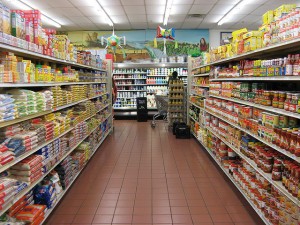
 You’ve probably heard that processed foods are just not as good for you as fresh. Besides the fact that they usually lack the vitamins, minerals, and phytonutrients that whole foods have, they also typically have unhealthy additives, like preservatives, dyes, and other chemicals to help them stay edible even after they’ve sat on the shelf for months.
You’ve probably heard that processed foods are just not as good for you as fresh. Besides the fact that they usually lack the vitamins, minerals, and phytonutrients that whole foods have, they also typically have unhealthy additives, like preservatives, dyes, and other chemicals to help them stay edible even after they’ve sat on the shelf for months.
In today’s world, it’s tough to avoid processed foods completely, particularly if you don’t have time to cook every night. You can, however, learn to read labels and choose only those foods that avoid the more dangerous additives-like the following six items:
1–Food Dyes. These are the synthetic chemicals that make processed foods look pretty, natural, or simply more appealing. Many have been linked to hyperactivity or other behavioral problems in children, so much so that a panel of experts earlier this year recommended that the Food and Drug Administration (FDA) conduct more research into the matter. All artificial food dyes contain lots of chemicals, some are made with petroleum, and several have been linked in animal studies to tumors. Typical foods with food additives include Jell-O, Skittles, M&M’s, and Fruit Loops.
2–Phthalates. I’ve mentioned these several times on this blog, but usually in connection with personal care products. Synthetic hormone disruptors used to soften plastics, phthalates also show up in food containers, particularly canned and packaged products. There’s no way to find these on the label, so it’s best just to avoid canned and packaged items as much as possible.
3–BPA. Called bisphenol A, this chemical is also used in the manufacturing of plastics, and shows up most often in the plastic linings of cans and in plastic beverage bottles. Look for brands that are packaging in new BPA-free cans and boxes, and try to avoid plastic bottles entirely.
4–Trans fats. There’s a dangerous loophole in the food industry right now, and that is that foods that aren’t really free of trans fats can still put “trans fat free” on their labels as long as there is less than .5 grams of trans fat per serving. May not seem like much, but if you eat 3-4 servings, that amount could add up. Trans fats contribute to heart disease, so be extra careful with things like baked goods, refrigerated doughs, and snack foods. Choose organic or shop at the Whole Foods store. You’ll have better odds of avoiding even trace amounts of trans fats.
5–MSG. It stands for monosodium glutamate, and is a type of additive found in Chinese food, canned veggies, soups, and processed meats to maximize flavor and improve taste appeal. It’s typically made by bacterial fermentation. Sensitive people can experience migraines, flushing, heart palpitations, and nausea.
6–Lead. Though of course not a regular food additive, lead is showing up in bottled juice, juice boxes, and packaged fruit, according to the Environmental Law Foundation in California. With the assistance of the Environmental Protection Agency (EPA), the organization tested nearly 400 samples of juices and packaged fruit marketed to children, and found that 125 (more than 85 percent) contained enough lead to warrant a warning label under California’s Safe Drinking Water and Toxic Enforcement Act of 1986. Particularly concerning is that both regular and organic juices tested positive. The solution? Squeeze your own juice, and limit your child’s consumption of juice to once a day. The rest of the time, water is best for health.
Do you try to avoid food additives? Share your tips with us.
Photo courtesy the captaincinema via Flickr.com.

